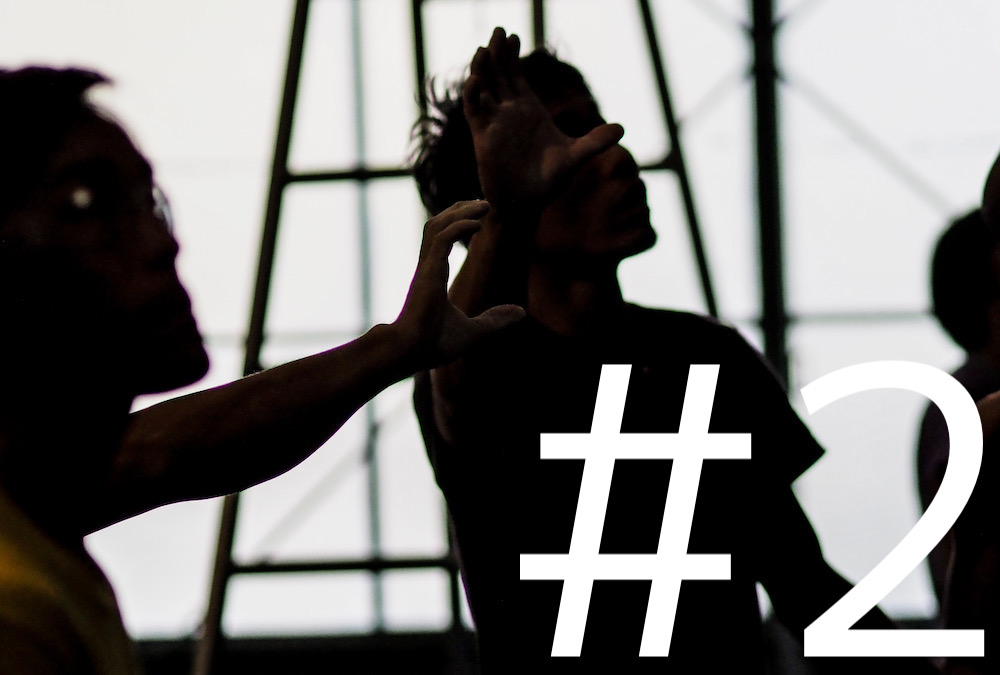In this article, we’ll consider what exactly we need to dig deeper.
The first step is to analyze the elements necessary for the route setter’s supreme task of “good problem”. What does a “good problem” look like? Let’s make a list of the elements we can come up with.
- Fun
- Right grading
- Not dangerous
- Good for customers who want session
- Easy to learn skills
- Look cool / The colors are consistent and easy to see
- Something that allows for endurance, instantaneous force and retention training
- Less damage to your fingers and body
- Cool Moves / Special Moves / Strange Moves
Something like this.
When you list them in this way, you realize that they are very abstract and vague. For example, the right grade. If you think through what “Grade” means, you may discover something new and take a step forward in your understanding.
Think about questioning subjective and vague expressions and stereotypes in climbing and trying to find the essence. You can’t improve your route setting without it.
Dig into the RIGHT grade
The right grade, as you know, varies greatly from gym to gym and person to person. I would venture to say that anything that deviates from the typical grade is not the right grade. Either way, there is no answer to this question, but that’s why it’s important for you to periodically delve into what grade is right for you.
I’ve heard of gyms judging the grade as “up to grade 6Q is a problem you can climb with your arms extended”. They also make very specific grade judgments such as “If dead points are included, at least grade 5Q”. This may be a good example of how easy it is to understand in terms of objectivity, but with something convenient and easy to understand comes risk.
What “systematization and simplification” will undermine
The property of a problem and the climbing techniques it contains are complex and diverse. Simplifying and systematizing that diversity has the great potential to throw off the criteria for goodness of a problem and close off the potential for that grade. You could say that it stops you from thinking about it.
In fact, even if these rules were aimed at grade uniformity, you can be sure that route setters will generally create assignments with false insights and judgments. Thinking about it shows that.
There is no such thing as an outstretched arm for a 6Q or 10Q climb, and even a 7Q climb requires a lot of problem to learn to use dead points well, and I’ve heard some of the staff say, “I don’t know if it’s gentle or appropriate for a beginner to keep their arms outstretched. The false notion that “static = easy” can take hold. There are no benefits.
It’s unbelievable that in the first place, in 2020, we have the easy and unintelligible idea that arm stretching climbs are a good way to climb. We need to recognize the history and reality that these constant movements to determine direction and simplify in-traction have been accompanied by a history and reality of bad habits for so many climbers.
A grading system that runs the risk of creating problems that hinder the customer’s development of their climbing skills, while at the same time undermining the growth and potential of the route setter, is definitely not appropriate.
Using the Fluctuations of Grading
The most appropriate grading in the gym that I’ve ever considered to be appropriate is a moderate amount of control over the customer’s growth. Currently, how much our current clients are growing, at what level they are plateauing, are they motivated, are they relying too much on retention, and are there large differences between their strengths and weaknesses on certain moves and inclines? We share this information with our staff and decide on the direction of the challenge to be set in order to promote the growth of the customer who is climbing each grade, and to make them aware of more delicate skills, we set the grade to be more severe (moves are severe), and when we want to push them to the higher grades, we set the grade to be gentler (moves are loosely).
I don’t mind if there are sometimes gaps in the range of difficulty for each grade. The basic premise is that there is no such thing as a grade in the first place. Still, it’s a very important indicator for climbers, and we need to use it as a tool to promote our customer’s growth. That’s the “right grade” for a gym, and that’s the current conclusion of the grading process.
A quick summary…
Plateauing: Increase larger movement problems and sweeten grade.
Accelerated Growth: Increase tasks that require strict form and settle grade spicy.
Specific details of each activity must be planned by the staff as needed. Route setter and instructor discuss each case and through trial and error, it is a very meaningful skill for both the customer and the staff, and through the accumulation of such trial and error, the overall quality of the environment will improve.
Next time we’ll consider the other items again.

